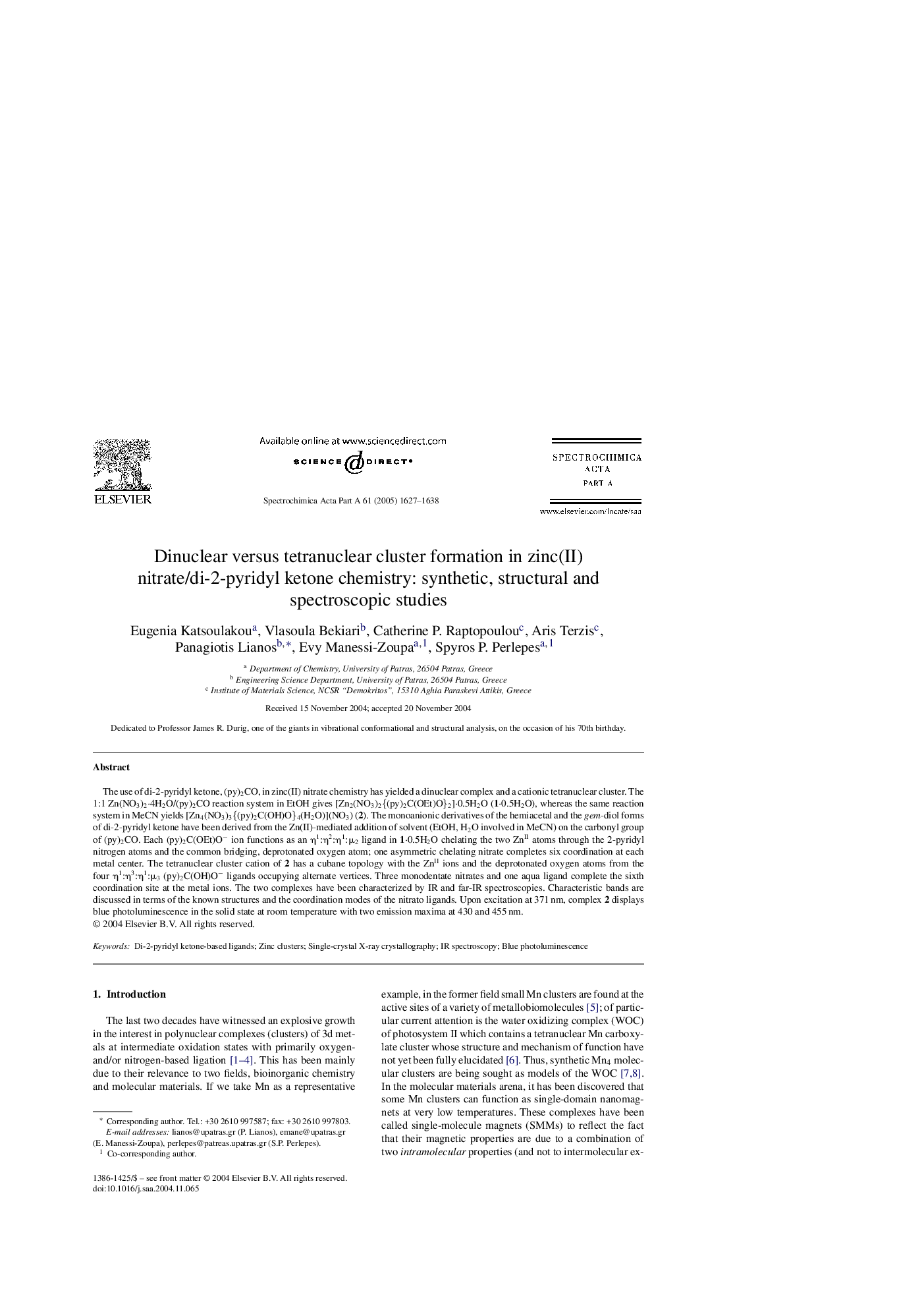| Article ID | Journal | Published Year | Pages | File Type |
|---|---|---|---|---|
| 10558324 | Spectrochimica Acta Part A: Molecular and Biomolecular Spectroscopy | 2005 | 12 Pages |
Abstract
The use of di-2-pyridyl ketone, (py)2CO, in zinc(II) nitrate chemistry has yielded a dinuclear complex and a cationic tetranuclear cluster. The 1:1 Zn(NO3)2·4H2O/(py)2CO reaction system in EtOH gives [Zn2(NO3)2{(py)2C(OEt)O}2]·0.5H2O (1·0.5H2O), whereas the same reaction system in MeCN yields [Zn4(NO3)3{(py)2C(OH)O}4(H2O)](NO3) (2). The monoanionic derivatives of the hemiacetal and the gem-diol forms of di-2-pyridyl ketone have been derived from the Zn(II)-mediated addition of solvent (EtOH, H2O involved in MeCN) on the carbonyl group of (py)2CO. Each (py)2C(OEt)Oâ ion functions as an η1:η2:η1:μ2 ligand in 1·0.5H2O chelating the two ZnII atoms through the 2-pyridyl nitrogen atoms and the common bridging, deprotonated oxygen atom; one asymmetric chelating nitrate completes six coordination at each metal center. The tetranuclear cluster cation of 2 has a cubane topology with the ZnII ions and the deprotonated oxygen atoms from the four η1:η3:η1:μ3 (py)2C(OH)Oâ ligands occupying alternate vertices. Three monodentate nitrates and one aqua ligand complete the sixth coordination site at the metal ions. The two complexes have been characterized by IR and far-IR spectroscopies. Characteristic bands are discussed in terms of the known structures and the coordination modes of the nitrato ligands. Upon excitation at 371 nm, complex 2 displays blue photoluminescence in the solid state at room temperature with two emission maxima at 430 and 455 nm.
Keywords
Related Topics
Physical Sciences and Engineering
Chemistry
Analytical Chemistry
Authors
Eugenia Katsoulakou, Vlasoula Bekiari, Catherine P. Raptopoulou, Aris Terzis, Panagiotis Lianos, Evy Manessi-Zoupa, Spyros P. Perlepes,
